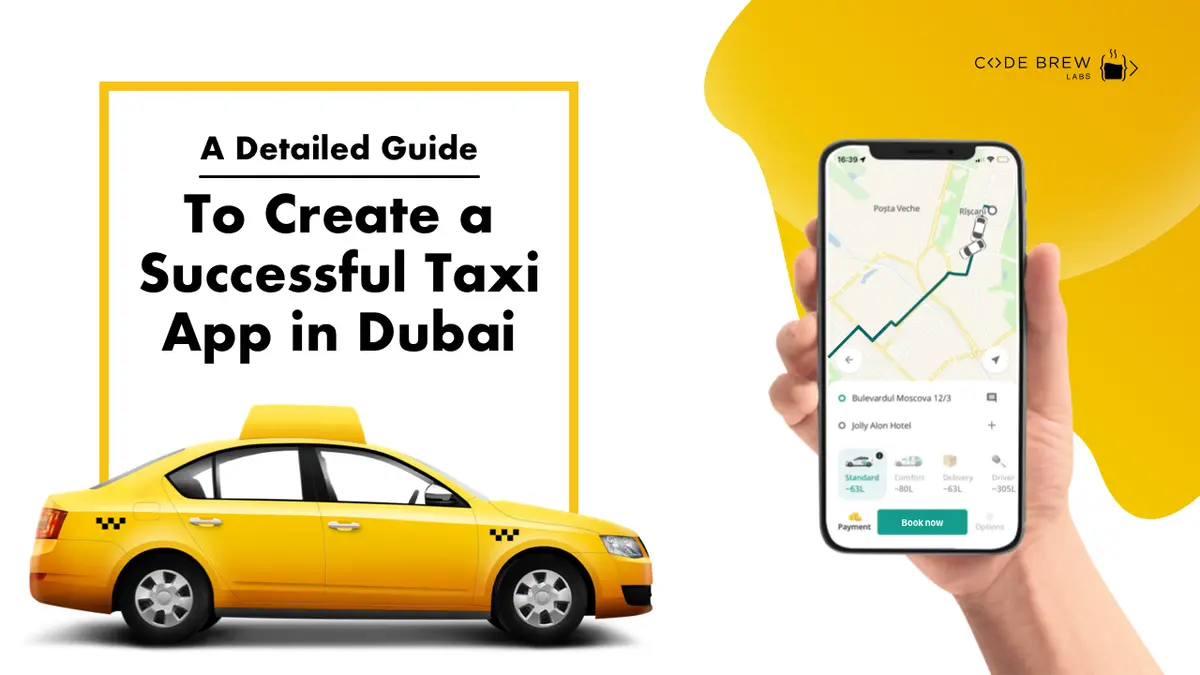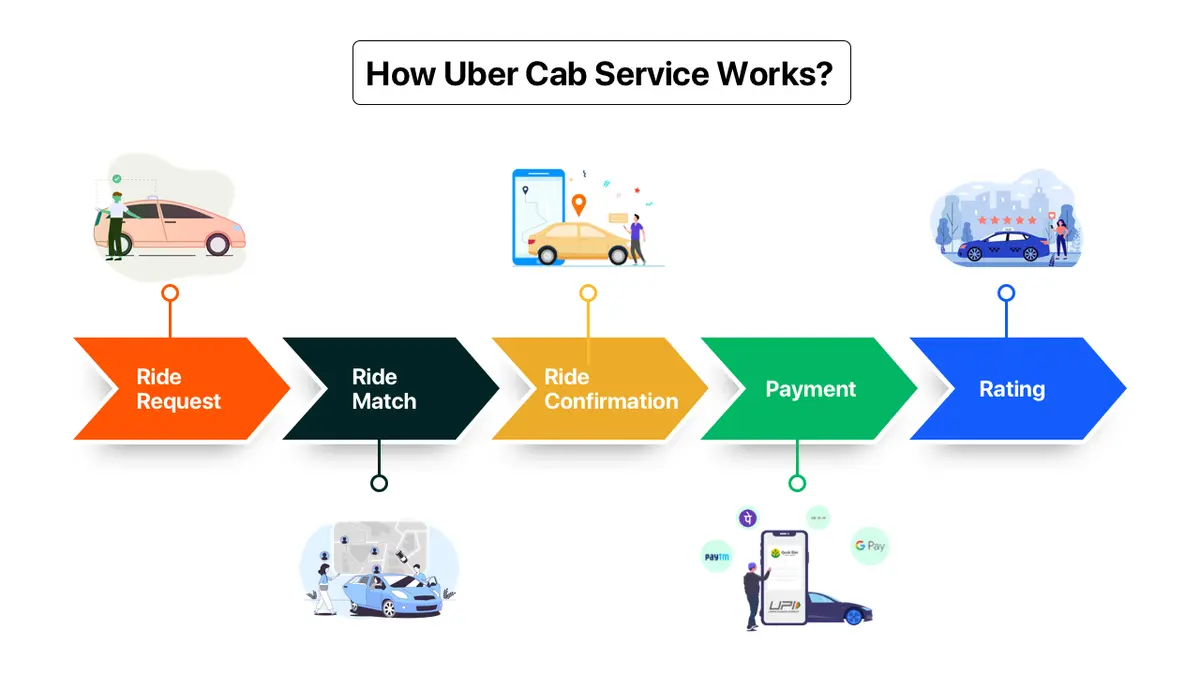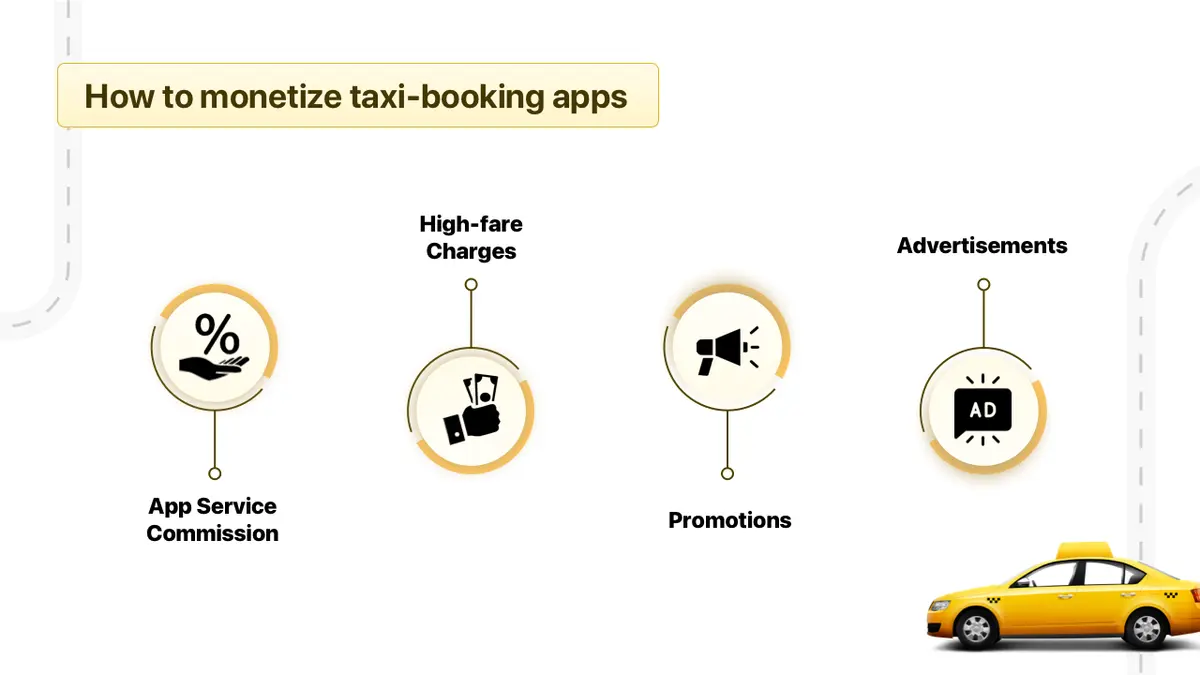
In this ever-changing world of the digital landscape, an on-demand taxi booking app is the most-trending buzz. The widespread adoption of on-demand taxi app solutions is one of the broader innovations that technology has by far brought new opportunities to earn and grow both for entrepreneurs and taxi drivers.
Table of Contents
If taxi app development brings earning models for both business owners and drivers, at the same time it has brought convenience and broader hassle-free traveling options for the end users i.e. Customers.
In this article, we’ll talk about how Uber like taxi app development can generate revenue by 10X, and then we’ll move on to the development process steps, how it works, monetization, and cost factors.
The Taxi Market size is estimated at USD 275.94 billion in 2024 and is expected to reach USD 423.59 billion by 2029, growing at a CAGR of 8.95% during the forecast period (2024-2029)
The development process of a taxi booking app development can be split down into four core steps. Let’s put light on these most intriguing steps of development.
First and foremost, before you embark on setting foot in the market to develop a taxi app, a well-thought-out market, and analytical research are imperative. It is important to audit the requirements so that the overall site mapping should go off from getting feature creep.
The app features certainly add value, to gain customer trust. It is significant to chalk out the complete architecture of the app and make a list of features that you want to incorporate in the on-demand taxi app solution.
App documentation consists of listing out core technicalities that are way too significant in terms of building a robust mobile app. For instance, which platforms do you want to run the app on – iOS or Android (or both), Native or Hybrid, tech stack to deploy, and which additional features a business wants to include or wants to implement in a complete custom mobile application?
After setting off the above-mentioned steps of building the app, it goes into the further stage of testing. Before market launch, if any, issues occur, they can easily be caught and resolved to make it a bug-free app.
To ensure that the customer/rider can use these services in a hassle-free manner, Uber like app development in 2023 has a very simple ride-booking process in place. Here’s how it works:

There are endless possibilities in the taxi booking mobile app development business model.
How? The figures say it all! Keep reading.
As per Statista report, by 2023, the ride-hailing & taxi segment has a revenue projection to reach 330.80 billion US dollars. This will hit a CAGR of 3.36% between 2023-2027 with an estimated massive revenue growth of 379.00 billion US dollars by 2027.
The below graph symbolizes a few of the monetization methods that turn a taxi booking app development into a money-making business model apart from just being a platform for drivers and customers.

Here is the list of the tech stack that businesses can imply for a successful taxi app development in Dubai.
Native apps are more consistent and faster than hybrid apps. These can be developed on a wide spectrum of programming languages such as C++, Python, and Java. Native app architecture can run either on iOS or Android devices but not together on both devices.
Furthermore, native apps require extra storage on users’ devices. This is somewhat essential because when developers release updates, it needs good storage space to download the update.
Tools and technologies used –
– Java
– Kotlin
– Python
The web view, which functions as a web application in a native browser, is the foundation of a hybrid mobile app. For iOS and Android, these are viewed in UIWebView and WebView, respectively.
App development languages like CSS, HTML, and Javascript are used to create these kinds of apps, which are subsequently enfolded in native apps utilizing Cordona.
Developing hybrid apps is less expensive than creating native apps. The code only needs to be written once, and then it may be used on other diverse platforms. The performance of this app plus the user experience is almost similar to native apps.
Tools and technologies used –
– Objective C
– Ionic
– HTML5
A web browser is used to run progressive web apps. They can be accessed on a mobile device and don’t need to be downloaded by the user. Web apps are frequently made using customary web development technologies like CSS, HTML5, JavaScript, and others.
Similar to hybrid apps, web apps have the primary benefit of not requiring different codebases or adaptations for various OS systems.
As a result, the development process can be quickly and economically move towards completion phase. Additionally, they act in a responsive manner, adjusting to the UI of the particular device on which they are running.
Tools and technologies used –
– CSS
– Javascript
– Ruby
The future of cross-platform app creation is React Native. Its creation involves creating a single program and releasing it simultaneously on Android and iOS, whereas native app development involves creating two different apps for Android and iOS separately.
Cross-platform app development has a number of benefits, including an increase in audience reach, development cost reduction, and code reuse. However, they also have a number of drawbacks, including different mobile app designs for iOS and Android, sluggish app updates, and poor app quality.
Making a wise choice when choosing your framework – iOS or Android library is the only way to guarantee that your app has many benefits and few drawbacks.
Tools and technologies used –
– Xamarin
– NativeScript
– Node.js.
Features, pricing, and specifications – all matter when creating a mobile app in order to bring an expansion in the market of the specific business niche.
No matter the type of app you’re looking to develop and launch, whether a regular app with a basic structure + nominal basic features or a complete custom mobile app development, you need to decide as a business how many features you want to include in the app.
It would certainly be considerable on the basis of your business requirements and leverage high performance out of it.
The taxi app development cost varies region-wise and the number of additional features + customizations the business wants to include in the on-demand taxi booking app.
Let us walk you through the two types of apps on which the entire cost is dependent and it increases as per the requirement of your business to add more features.
The popularity of ride-sharing app companies like Uber, Lyft, and Grab has piqued the curiosity of many business owners. Taxi booking mobile app development businesses are concretely a mix of two different types of solutions to cater to market demands.
Business owners and entrepreneurs choose to build custom apps due to the requirements that are specific to their business niche. These apps provide the flexibility of:
The pre-built mobile software can help you get the greatest outcomes for your ride-sharing business. You can just purchase, install, and use your program without having to do any further action.
The following are a few elements that make ready-made apps successful:
By utilizing the power of technology, the taxi booking app clone is quickly gaining traction. The shifting dynamics of on-demand taxi app solutions can be quite advantageous for business owners, startups, or organizations. The future of a technologically-driven app development company is a result of getting evolved in the innovative world of mobile apps.
We at Code Brew are a diverse team that creates cutting-edge taxi mobile apps by fusing their extensive subject knowledge with new trends.
So get in touch with us if you want to develop taxi app and grow in this industry, contact mavens of Code Brew Labs to chalk out your business plan.
